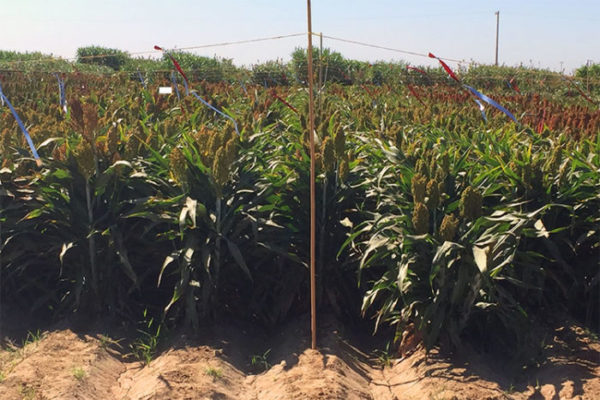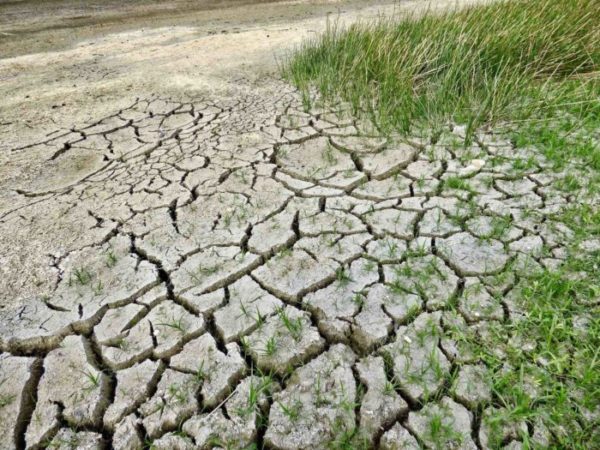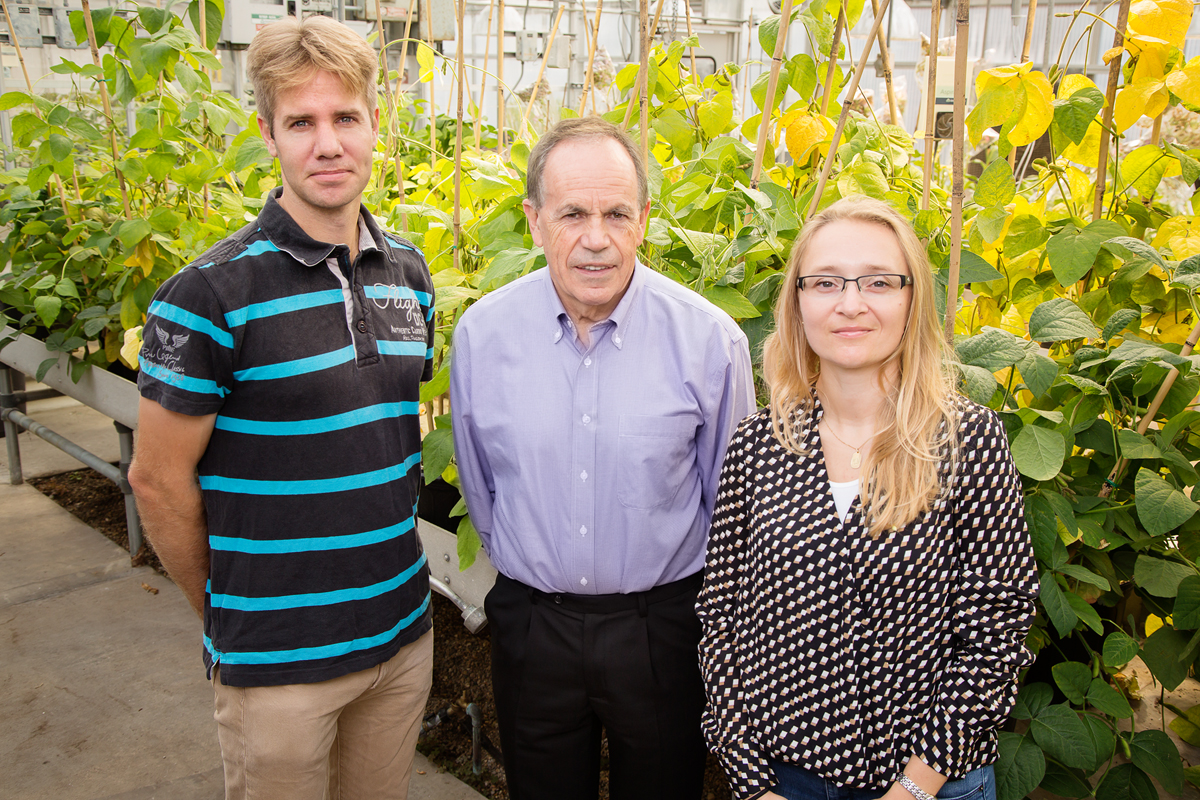





The more specific climate scientists are about the uncertainties of global warming, the more the American public trusts their predictions, according to new research by Stanford scholars.
But scientists may want to tread carefully when talking about their predictions, the researchers say, because that trust falters when scientists acknowledge that other unknown factors could come into play.
In a study in Nature Climate Change, researchers examined how Americans respond to climate scientists’ predictions about sea level rise. They found that when climate scientists include best-case and worst-case case scenarios in their statements, the American public is more trusting and accepting of their statements. But those messages may backfire when scientists also acknowledge they do not know exactly how climate change will unfold.
“Scientists who acknowledge that their predictions of the future cannot be exactly precise and instead acknowledge a likely range of possible futures may bolster their credibility and increase acceptance of their findings by non-experts,” said Jon Krosnick, a Stanford professor of communication and of political science and a co-author on the paper. “But these gains may be nullified when scientists acknowledge that no matter how confidently they can make predictions about some specific change in the future, the full extent of the consequences of those predictions cannot be quantified.”
Predicting the future always comes with uncertainty, and climate scientists routinely recognize limitations in their predictions, note the researchers.
“In the context of global warming specifically, scientific uncertainty has been of great interest, in part because of concerted efforts by so-called ‘merchants of doubt’ to minimize public concern about the issue by explicitly labeling the science as ‘uncertain,’” said Lauren Howe, who was a postdoctoral scholar at Stanford when she conducted the research with Krosnick and is first author on the paper.
“We thought that, especially in this critical context, it was important to understand whether expressing uncertainty would undermine persuasion, or whether the general public might instead recognize that the study of the future has to involve uncertainty and trust predictions where that uncertainty is openly acknowledged more than those where it is minimized,”
Howe said.
To better understand how the public reacts to scientists’ messages about the uncertainties of climate change, the researchers presented a nationally representative sample of 1,174 American adults with a scientific statement about anticipated sea level rise.
Respondents were randomly assigned to read either a prediction of the most likely amount of future sea level rise; a prediction plus a worst-case scenario; or a robust prediction with worst-case and best-case scenarios, for example: “Scientists believe that, during the next 100 years, global warming will cause the surface of the oceans around the world to rise about 4 feet. However, sea level could rise as little as 1 foot, or it could rise by as much as 7 feet.”
The researchers found that when predictions included a best-case and worst-case scenario, it increased the number of participants who reported high trust in scientists by 7.9 percentage points compared with participants who only read a most likely estimate of sea level rise.
Changes in environmental policies, human activities, new technologies and natural disasters make it difficult for climate scientists to quantify the long-term impact of a specific change – which scientists often acknowledge in their predictions, the researchers said. They wanted to know if providing such well-intended, additional context and acknowledging complete uncertainty would help or hurt public confidence in scientific findings.
To find out, the researchers asked half of their respondents to read a second statement acknowledging that the full extent of likely future damage of sea level rise cannot be measured because of other forces, such as storm surge: “Storm surge could make the impacts of sea level rise worse in unpredictable ways.”
The researchers found that this statement eliminated the persuasive power of the scientists’ messages. When scientists acknowledged that storm surge makes the impact of sea level rise unpredictable, it decreased the number of participants who reported high trust in scientists by 4.9 percentage points compared with the participants who only read a most likely estimate of sea level rise.
The findings held true regardless of education levels and political party affiliation.
Not all expressions of uncertainty are equal, Howe said: “Scientists may want to carefully weigh which forms of uncertainty they discuss with the public. For example, scientists could highlight uncertainty that has predictable bounds without overwhelming the public with the discussion of factors involving uncertainty that can’t be quantified.”
Read the paper: Nature Climate Change
Article source: Stanford University
Author: Melissa De Witte
Image credit: Jody Davis / Pixabay


Hidden underground networks of plant roots snake through the earth foraging for nutrients and water, similar to a worm searching for food. Yet, the genetic and molecular mechanisms that govern which parts of the soil roots explore remain largely unknown. Now, Salk Institute researchers have discovered a gene that determines whether roots grow deep or shallow in the soil.
In addition, the findings, published in Cell, will also allow researchers to develop plants that can help combat climate change as part of Salk’s Harnessing Plants Initiative. The initiative aims to grow plants with more robust and deeper roots that can store increased amounts of carbon underground for longer to reduce CO2 in the atmosphere. The Salk initiative will receive more than $35 million from over 10 individuals and organizations through The Audacious Project to further this effort.
“We are incredibly excited about this first discovery on the road to realizing the goals of the Harnessing Plants Initiative,” says Associate Professor Wolfgang Busch, senior author on the paper and a member of Salk’s Plant Molecular and Cellular Biology Laboratory as well as its Integrative Biology Laboratory. “Reducing atmospheric CO2 levels is one of the great challenges of our time, and it is personally very meaningful to me to be working toward a solution.”
In the new work, the researchers used the model plant thale cress (Arabidopsis thaliana) to identify genes and their variants that regulate the way auxin, a hormone that is a key factor in controlling the root system architecture, works. Though auxin was known to influence almost all aspects of plant growth, it was not known which factors determined how it specifically affects root system architecture.
“In order to better view the root growth, I developed and optimized a novel method for studying plant root systems in soil,” says first author Takehiko Ogura, a postdoctoral fellow in the Busch lab. “The roots of A. thaliana are incredibly small so they are not easily visible, but by slicing the plant in half we could better observe and measure the root distributions in the soil.”
The team found that one gene, called EXOCYST70A3, directly regulates root system architecture by controlling the auxin pathway without disrupting other pathways. EXOCYST70A3 does this by affecting the distribution of PIN4, a protein known to influence auxin transport. When the researchers altered the EXOCYST70A3 gene, they found that the orientation of the root system shifted and more roots grew deeper into the soil.
“Biological systems are incredibly complex, so it can be difficult to connect plants’ molecular mechanisms to an environmental response,” says Ogura. “By linking how this gene influences root behavior, we have revealed an important step in how plants adapt to changing environments through the auxin pathway.”
In addition to enabling the team to develop plants that can grow deeper root systems to ultimately store more carbon, this discovery could help scientists understand how plants address seasonal variance in rainfall and how to help plants adapt to changing climates.
“We hope to use this knowledge of the auxin pathway as a way to uncover more components that are related to these genes and their effect on root system architecture,” adds Busch. “This will help us create better, more adaptable crop plants, such as soybean and corn, that farmers can grow to produce more food for a growing world population.”
Other authors included Santosh B. Satbhai of Salk along with Christian Goeschl, Daniele Filiault, Madalina Mirea, Radka Slovak and Bonnie Wolhrab of the Gregor Mendel Institute in Austria.
About the Harnessing Plants Initiative:
Climate change poses an immediate threat to our future. Rising temperatures from excess carbon dioxide in the atmosphere has led to increasingly extreme and dangerous weather patterns that threaten animals and plants alike. The Salk Institute’s Harnessing Plants Initiative (HPI) is an innovative, scalable and bold approach to fight climate change by optimizing a plant’s natural ability to capture and store carbon and adapt to diverse climate conditions. This approach can help draw down and store more carbon and that—combined with other global efforts—will mitigate the disastrous effects of climate change while providing more food, fuel and fiber for a growing population.
Read the paper: Cell
Article source: Salk Institute
Image: Salk Institute

A new computer model incorporates how microscopic pores on leaves may open in response to light—an advance that could help scientists create virtual plants to predict how higher temperatures and rising levels of carbon dioxide will affect food crops, according to a study published in a special issue of the journal Photosynthesis Research.
“This is an exciting new computer model that could help us make much more accurate predictions across a wide range of conditions,” said Johannes Kromdijk, who led the work as part of an international research project called Realizing Increased Photosynthetic Efficiency RIPE.
RIPE, which is led by the University of Illinois, is engineering crops to be more productive without using more water by improving photosynthesis, the natural process all plants utilize to convert sunlight into energy to fuel growth and crop yields. RIPE is supported by the Bill & Melinda Gates Foundation, the U.S. Foundation for Food and Agriculture Research (FFAR), and the U.K. Government’s Department for International Development (DFID).
The current work focused on simulating the behavior of what are known as stomata—microscopic pores in leaves that, in response to light, open to allow water, carbon dioxide, and oxygen to enter and exit the plant. In 2018, the RIPE team published a paper in Nature Communications that showed increasing one specific protein could prompt plants to close their stomata partially—to a point where photosynthesis was unaffected, but water loss decreased significantly. This study’s experimental data was used to create the newly improved stomata model introduced today.
“We’ve known for decades that photosynthesis and stomatal opening are closely coordinated, but just how this works has remained uncertain,” said Stephen Long, Ikenberry Endowed University Chair of Crop Sciences and Plant Biology at the University of Illinois. “With this new computer model, we have a much better tool for calculating stomatal movements in response to light.”
The ultimate goal, Long said, is to identify opportunities to control these stomatal gatekeepers to make drought-tolerant crops. “Now we’re closing in on the missing link: How photosynthesis tells stomates when to open.”
Computer modeling has been a major advance in crop breeding. The father of modern genetics, Gregor Mendel, made his breakthrough discovery that pea plants inherit traits from their parents by growing and breeding more than 10,000 pea plants over eight years. Today, plant scientists can virtually grow thousands of crops in a matter of seconds using these complex computer models that simulate plant growth.
Stomatal models are used together with models for photosynthesis to make wide-ranging predictions from future crop yields to crop management, such as how crops respond when there is a water deficit. In addition, these models can give scientists a preview of how crops like wheat, maize, or rice could be affected by rising carbon dioxide levels and higher temperatures.
“The previous version of the stomatal model used a relationship that wasn’t consistent with our current understanding of stomatal movements,” said Kromdijk, now a University Lecturer at the University of Cambridge. “We found that our new version needs far less tuning to make highly accurate predictions.”
Still, there’s a lot of work to be done to show that this modified model functions in a wide variety of applications and to underpin the relationship between stomata and photosynthesis further.
“We have to show that this model works for a diverse range of species and locations,” said former RIPE member Katarzyna Glowacka, now an assistant professor at the University of Nebraska-Lincoln. “Large-scale simulation models string together models for atmospheric turbulence, light interception, soil water availability, and others—so we have to convince several research communities that this is an improvement that is worth making.”
Read the paper: Photosynthesis Research
Article source: University of Illinois College of Agricultural, Consumer and Environmental Sciences ACES
Image: Brian Stauffer/University of Illinois

More than half of the carbon sink in the world’s forests is in areas where the trees are relatively young – under 140 years old – rather than in tropical rainforests, research at the University of Birmingham shows.
These trees have typically ‘regrown’ on land previously used for agriculture, or cleared by fire or harvest and it is their young age that is one of the main drivers of this carbon uptake.
Forests are widely recognised as important carbon sinks – ecosystems capable of capturing and storing large amounts of carbon dioxide – but dense tropical forests, close to the equator have been assumed to be working the hardest to soak up these gases.
Researchers at the Birmingham Institute of Forest Research (BIFoR) have carried out fresh analysis of the global biosphere using a new combination of data and computer modelling in a new study published in the Proceedings of the National Academy of Sciences of the United States of America (PNAS). Drawing on data sets of forest age, they were able to show the amount of carbon uptake between 2001 and 2010 by old, established areas of forest.
They compared this with younger expanses of forest which are re-growing across areas that have formerly experienced human activities such as agriculture or logging or natural disturbances such as fire.
Previously it had been thought that the carbon uptake by forests was overwhelmingly due to fertilisation of tree growth by increasing levels of carbon dioxide in the atmosphere.
However, the researchers found that areas where forests were re-growing sucked up large amounts of carbon not only due to these fertilisation effects, but also as a result of their younger age. The age effect accounted for around 25 per cent of the total carbon dioxide absorbed by forests. Furthermore, this age-driven carbon uptake was primarily situated not in the tropics, but in the middle and high latitude forests.
These forests include, for example, areas of land in America’s eastern states, where settlers established farmlands but then abandoned them to move west towards the end of the 19th century. The abandoned land became part of the US National Forest, along with further tracts abandoned during the Great Depression in the 1930s.
Other significant areas of forest re-growth include boreal forests of Canada, Russia and Europe, which have experienced substantial harvest activity and forest fires. Largescale reforestation programmes in China are also making a major contribution to this carbon sink.
Dr Tom Pugh, of the Birmingham Institute of Forest Research (BIFoR), explained: “It’s important to get a clear sense of where and why this carbon uptake is happening, because this helps us to make targeted and informed decisions about forest management.”
The research highlights the importance of forests in the world’s temperate zone for climate change mitigation, but also shows more clearly how much carbon these re-growing forests can be expected to take up in the future. This is particularly important because of the transient nature of re-growth forest: once the current pulse of forest re-growth works its way through the system this important part of the carbon sink will disappear, unless further reforestation occurs.
“The amount of CO2 that can be taken up by forests is a finite amount: ultimately reforestation programmes will only be effective if we simultaneously work to reduce our emissions,” explains Dr Pugh.
Read the paper: PNAS
Article source:University of Birmingham
Image credit: CCO Public domain